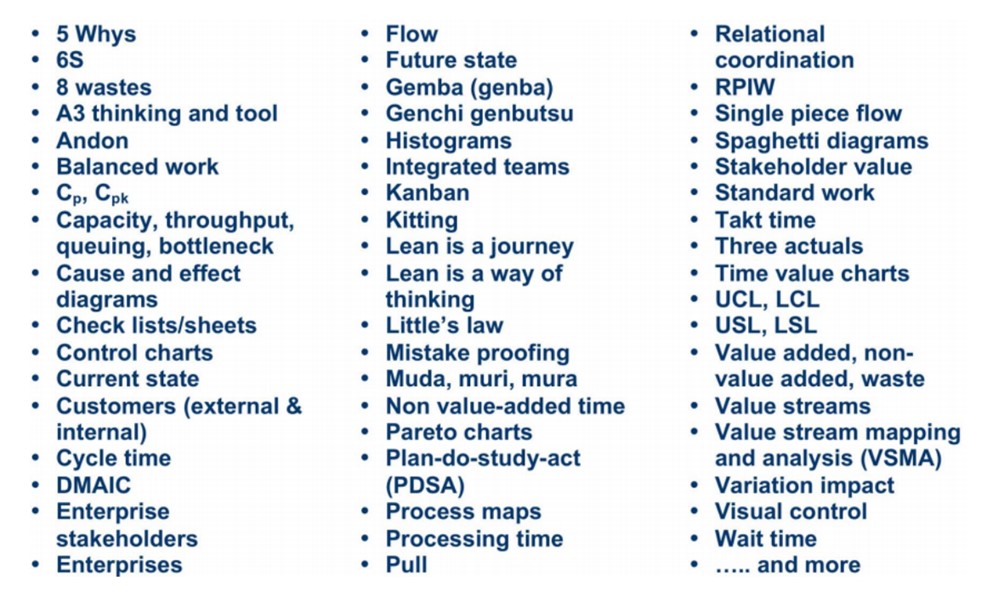Jordan S. Peck, PhD
Vice President of Physician Practice Operations
Southern Maine Health Care
Learning Objectives:
- Describe common challenges associated with performance improvement work
- Recognize applications of a few improvement tools in appropriate context
When you visit the MaineHealth Center for Performance Improvement (CPI) website, one of the links is “Tools and Trainings.”[1] Whenever I see this link, a montage of eye rolls goes through my head. Generally I have received positive responses to a disciplined quality/performance improvement (QI/PI) project approach and to the corresponding tools, but I have also heard:
- “Why can’t we ‘just do it!”
- “I don’t like all of this data collection, my team prefers to just ‘PDSA’…”
- “Whatever, I am sure the charter is fine”… 6 months later… “why we are working on this?”
- “We don’t need a Lean person, I can throw a bunch of post it notes on the wall!”
- “Lean Black Belt… are you going to kick our patients?”
- “There are too many templates to fill out, I don’t have time for this!”
- “Why do we need a whole process just to get people to do their jobs?”
Figure 1 is a list of Lean tools created by the Lean EdNet[2]

Modern Lean literature talks about Lean Daily Management Systems (coined “Operational Excellence at MaineHealth) and culture change as opposed to tools.[1] However, even these high level initiatives offer a healthy dose of tools such as Letter Charts, Run Charts, Pareto Charts, Action Plan Documents, Strategic Goals driver documents, etc.
Why do all of these tools exist? Why can’t we “just do it?” When leading (QI/PI) projects it is difficult to find the balance between being disciplined and getting overwhelmed with tools. When faced with this problem, I keep the following principles in mind:
- We don’t know the real problem: I have always loved the phrase (used by TV doctors), “What SEEMS to be the problem?” The phrase implies that the patient will describe a symptom and let the expert really understand the underlying problem. Similarly, if we initiate a project based on a symptom and without a disciplined approach, we treat the symptoms and not the problem. The benefits of avoiding this are obvious, but we shouldn’t throw the whole QI/PI toolbox at it. Often a 5 Why’s exercise is enough and you don’t need to make a fishbone diagram; or a process map is enough and you don’t need to make a spaghetti diagram.
- Symptoms are experienced in different ways by each stakeholder: Often you think you know the problem, but the person next to you has experienced it in a totally different way. A fundamental to project success is getting everyone on the same page. Some people use an “A3” document for this; others use actual project management-style charters. Remain aware of many charter tool options and pick a tool that ensures the conversation has happened without overwhelming and unnecessary details.
- Humans struggle with just ‘getting it done,’ even when they are committed: It is well understood that people struggle with weight, reading that book on our night stand, and with any other New Year’s resolution. But when someone is struggling to achieve a task at work we ask “why they can’t just do their job.” The QI/PI tools are designed to acknowledge that even the most committed person has very real barriers to completing seemingly simple tasks. Like the myriad tools and plans to help people meet their weight loss goals, QI/PI tools, processes, and plans are needed to make it easy to do the right thing. Working in healthcare, I have seen a lot of teams that have identified “just do its” through short conversations, avoiding a deeper project. The problem is that these solutions are often really “just remember its” and rely on a human to figure it out for themselves moving forward. Without a process or method to ensure that an action happens, no real solution has been generated.
- The Solution isn’t obvious or it would have been fixed already: Even a published best practice is sometimes unsuccessful in a new context. For this reason, many tools such as PDSA and control charts are designed to ensure that we do not move forward without proving our implemented solution. If it doesn’t work, then it is time to think of a new solution. If you are unwilling to spend the time proving that your solution is successful then you should re-consider working on the project at all.
When it comes to tool fatigue, we can often be our own worst enemies. If we rush into projects without having the discipline to ensure that our efforts are targeted correctly and that our solutions were truly successful, we create unnecessary, unsustainable work for our colleagues. This has led QI/PI professionals to quickly adopt the phrase “go slow to go fast.”[2] To avoid spinning your wheels, address the key 4 elements with some level of discipline. Yet it doesn’t necessitate using the full tool box in every project. Finding the balance requires practice and patience.
[1] https://home.mainehealth.org/2/MMC/CenterforPerformanceImprovement/SitePages/Home.aspx
[2] https://ocw.mit.edu/courses/aeronautics-and-astronautics/16-660j-introduction-to-lean-six-sigma-methods-january-iap-2012/lecture-notes-1/
[3] Mann, D., 2014 “Creating a Lean Culture,” 3rd Edition, Routledge, 2014
[4] https://medium.com/@reganbach/go-slow-to-go-fast-8c3055e723ed
